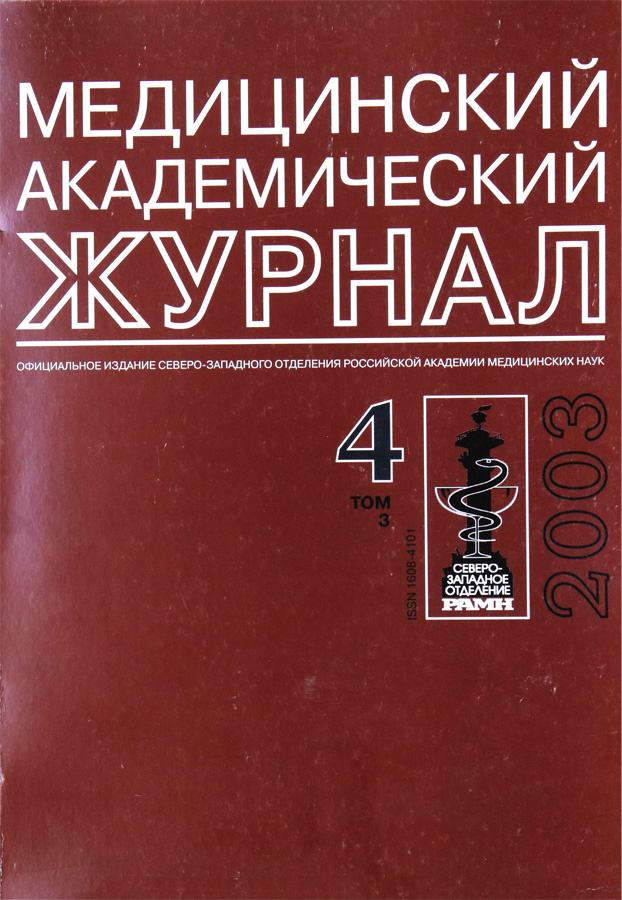Психофизиологическая коррекция состояния человека
- Авторы: Суворов Н.Б.1, Фролова Н.Л.1, Федоров А.А.1
-
Учреждения:
- Научно-исследовательский институт экспериментальной медицины РАМН
- Выпуск: Том 3, № 4 (2003)
- Страницы: 84-96
- Раздел: Профилактическая медицина
- Статья опубликована: 25.11.2003
- URL: https://journals.eco-vector.com/MAJ/article/view/693777
- ID: 693777
Цитировать
Полный текст
Аннотация
При адаптивном знакопеременном биоуправлении с обратной связью испытуемый информируется о динамике собственного кардиоритма. Модуляция кардиоритма осуществляется за счет особого ритма дыхания при непрерывном зрительном контроле, имеющем мотивационное значение, и используется для коррекции состояния человека. Цикл кардиотренинга прошли 85 пациентов с нейроциркуляторной дистонией. Помимо кардиоритмограммы регистрировались электроэнцефалограмма, пневмограмма, ряд параметров кардиоваскулярной системы, проводились психологические тесты и др. Применение биоуправления в качестве диагностической процедуры показало, что кардиоритмограммы пациентов разделяются на три типа: I тип - дыхательная аритмия с локализацией собственных гармоник в области средних и медленных волн; II - дыхательная аритмия с локализацией собственных гармоник в области быстрых волн; III - отсутствие дыхательной аритмии. Произвольная модуляция кардиоритма и активизация его собственных гармоник способствуют выработке, усилению и тренировке кардиореспираторной синхронизации и формированию новых ритмов межсистемного взаимодействия. Положительный клинический эффект обусловлен нормализацией артериального давления, час тоты сердечных сокращений, ритмов электроэнцефалограммы и подкреплен объективной и субъективной оценкой состояния пациентов. Достижению результата предшествует попеременная тренировка (торможение/активация) симпато-вагусных механизмов регуляции кардиоритма, приводящая к расширению диапазона ритмического взаимодействия дыхательной и кардиоваскулярной систем.
Об авторах
Н. Б. Суворов
Научно-исследовательский институт экспериментальной медицины РАМН
Автор, ответственный за переписку.
Email: shabanov@mail.rcom.ru
Россия, Санкт-Петербург, 197376, ул. Академика Павлова, 12
Н. Л. Фролова
Научно-исследовательский институт экспериментальной медицины РАМН
Email: shabanov@mail.rcom.ru
Россия, Санкт-Петербург, 197376, ул. Академика Павлова, 12
А. А. Федоров
Научно-исследовательский институт экспериментальной медицины РАМН
Email: shabanov@mail.rcom.ru
Россия, Санкт-Петербург, 197376, ул. Академика Павлова, 12
Список литературы
- Василевский Н. Н., Алексанян 3. А. Адаптивное управление вегетативными процессами // Физиол. журн. СССР. 1982. Т. 68. № 7. С. 948-952.
- Василевский Н. Н., Сидоров Ю. А., Суворов Н. Б. О роли биоритмологических процессов в механизмах адаптации и коррекции регуляторных дисфункций // Физиология человека. 1993. Т. 19. №1. С. 91-98.
- Ващилло Е. Г., Константинов М. А. Произвольная регуляция сердечного ритма // Проблемы нейрокибернетики. Ростов-на-Дону: изд-во РГУ, 1983. С. 80-87.
- Джафарова О. А., Донская О. Г., Зубков А. А., Штарк М. Б. Игровое биоуправление как технология профилактики стресс-зависимых состояний // Колл. монография «Биоуправление-4. Теория и практика» / Ред. М. Б. Штарк, М. Schwartz. Новосибирск: ЦЕРИС, 2002. С. 86-95.
- Захарова В. В., Колл В., Сохадзе Э. М., Штарк М. Б. Биоуправление. Итоги и перспективы развития (Аналитико-библиографический обзор) // Биоуправление-2. Теория и практика / Ред. М. Б. Штарк. Новосибирск, 1993. С. 13-19.
- Суворов Н. Б. Адаптивные системы знакопеременного биоуправления // Колл. монография «Телемедицина. Новые информационные технологии на пороге XXI века» / Ред. Р. М. Юсупов, Р. И. Полонников. СПб., СПИН РАН, 1998. С. 253-272.
- Суворов Н. Б., Зуева Н. Г., Гусева Н. Л. Отражение индивидуально-типологических особенностей в структуре пространственного взаимодействия волн ЭЭГ различных частотных диапазонов // Физиология человека. 2000. Т. 26. № 3. С. 60-66.
- Суворов Н. Б., Фролова Н. Л. Биоуправление: ритмы кардиореспираторной системы и ритмы мозга // Колл. монография «Биоуправление-4. Теория и практика» / Ред. М. Б. Штарк, М. Schwartz. Новосибирск: ЦЕРИС, 2002. С. 35-44.
- Суворов Н. Б., Урьяш В. В., Яковлев В. В. Соотношение сенсомоторного ритма коры головного мозга и частоты сердечных сокращений кошки // Физиол. журн. СССР. 1980. Т. 66. № 5. С. 746-749.
- Штарк М. Б., Шварц М. С. Некоторые аспекты биоуправления в интерпретации редакторов // Биоуправление-4. Теория и практика / Ред. М. Б. Штарк, М. Schwartz. Новосибирск: ЦЕРИС, 2002. С. 3-7.
- Хэссет Д. Введение в психофизиологию // М.: Мир, 1981.248 с.
- Aguirre A., Wodicka G. R., Maayan C., Shannon D. C. Interaction between respiratory and RR interval oscillations at low frequencies // J. Auton. Nerv. Syst. 1990. Vol. 29. № 3. P. 241-246.
- Bernardi L., Rossi M., Ricardi L. Clinical assessment of respiratory sinus arrhythmia by computerized analysis of RR interval and respiration // G. Ital. Cardiol. 1992. Vol. 22. № 4. P. 517-529.
- Hatch P. Controlled Clinical Trials for Biofeed back // Biofeedback: Studies in Clinical Efficacy / Eds. Hatch J. P. et al. N. Y.: Plenum Press, 1987. P. 323-363.
- Kobayashi H. Postural effect on respiratory sinus arrhythmia with various respiratory frequencies // Appl. Human Sci. 1996. Vol. 15. № 2. P. 87-91.
- Kollai M., Mizsei G. Respiratory sinus arrhythmia is a limited measure of cardiac parasympathetic control in man // J. Physiol. (London). 1990. Vol. 424. P. 329-342.
- Suvorov N. B. Adaptive Biofeedback Control in Biological Systems // Proceedings of Intern. Conf. on Informatics and Control (ICI&C’97). St. Petersburg, 1997. Vol. 3 of 3. P. 905-910.
Дополнительные файлы






